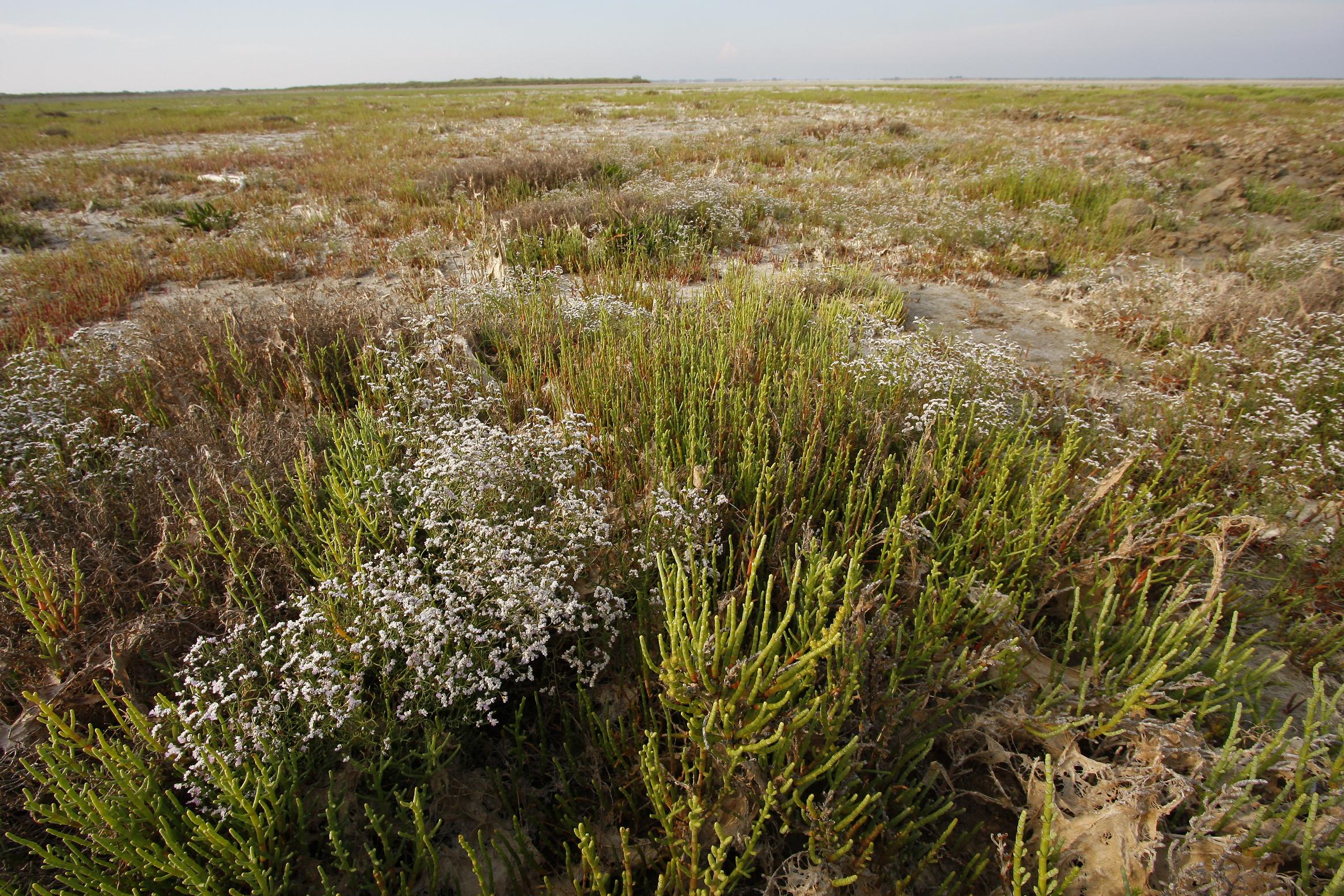L’acquisition récente de près de 7 000 ha d’anciens salins représente une opportunité unique pour expérimenter et mettre en œuvre à grande échelle une gestion favorable aux processus de restauration écologique et intégrant pleinement les conséquences du changement climatique.
 Les trois dernières années, le Conservatoire du Littoral, épaulé par divers acteurs publics (Ministère de l’Ecologie, Union européenne, Agence de l’Eau RM&C, Région PACA, Département des bouches du Rhône) s’est progressivement porté acquéreur d’un vaste ensemble foncier d’anciens salins, atteignant aujourd’hui près de 7 000 hectares.
Les trois dernières années, le Conservatoire du Littoral, épaulé par divers acteurs publics (Ministère de l’Ecologie, Union européenne, Agence de l’Eau RM&C, Région PACA, Département des bouches du Rhône) s’est progressivement porté acquéreur d’un vaste ensemble foncier d’anciens salins, atteignant aujourd’hui près de 7 000 hectares.
Composé d’anciennes lagunes jusque là utilisées pour l’activité salicole et de milieux naturels terrestres périphériques, ce site exceptionnel comprend plus de 17 km de littoral, dont une partie subit une forte érosion.
Over the last three years, the Conservatoire du Littoral (Coastal Protection Agency), assisted by various public bodies (Ministry of Ecology, European Union, RM&C Water Agency, PACA Region, Bouches du Rhône Department) has progressively bought up a vast land area of former salinas, now reaching nearly 7000 hectares.
Made up of former lagoons until recently used for salt production together with peripheral natural terrestrial habitats, this exceptional site includes more than 17 km of coastline, part of which is subject to heavy erosion.
These areas of great ecological and landscape value are a major management and conservation issue for the Camargue, and for the Mediterranean as a whole, requiring a real partnership. The Conservatoire du Littoral has therefore entrusted management of the site to three organisations with complementary areas of expertise: the Camargue Regional Natural Park (coordinator), the Tour du Valat, and the National Nature Protection Society, (manager of the Camargue Reserve, which neighbours the site). This partnership will enable the testing and real-scale implementation of adaptive management methods in response to both conservation objectives and the demands of society. In particular, it needs to deal with coastline management in a local and global context where marine submersion issues are omnipresent. Initial studies, already or soon to be underway, will investigate three areas -biodiversity (study coordinated by the Tour du Valat), the hydraulic system, and the potential for socio-economic development – on which basis a provisional management plan will be drawn up. In the long run, the management of the site is intended to serve as a model for the restoration and reclaiming of other Mediterranean wetlands.